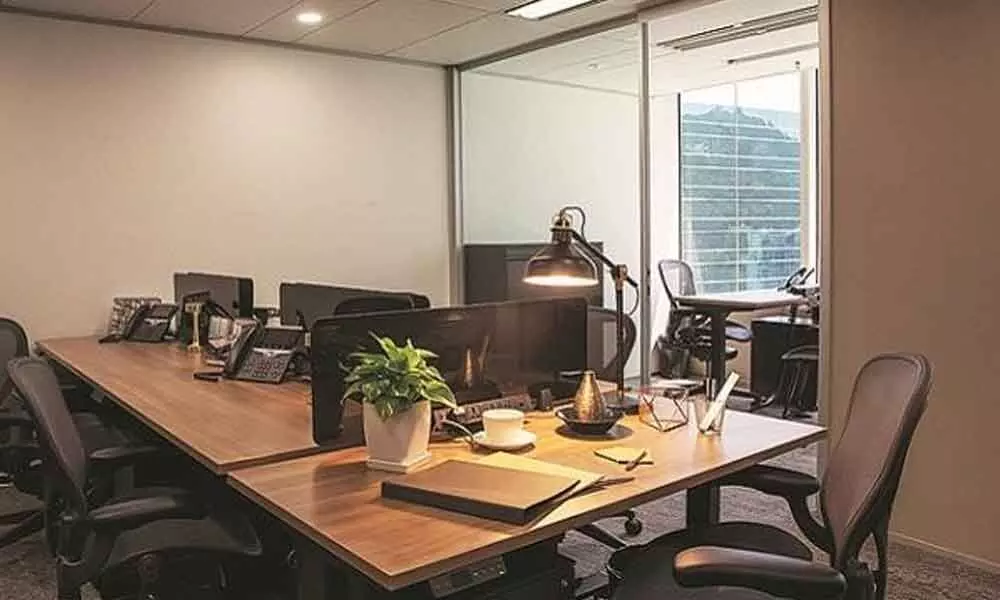Office space absorption to grow 12-18% next fiscal : Crisil

Office space absorption to grow 12-18% next fiscal : Crisil
Net leasing of commercial office space across the country will grow 12-18 per cent to 25-30 million square feet (msf) next fiscal, riding on a low base of the current fiscal, gradual return of tenants to offices, and improvement in the macroeconomic situation, a CRISIL analysis showed on Thursday.
New Delhi:Net leasing of commercial office space across the country will grow 12-18 per cent to 25-30 million square feet (msf) next fiscal, riding on a low base of the current fiscal, gradual return of tenants to offices, and improvement in the macroeconomic situation, a CRISIL analysis showed on Thursday.
Despite this, net leasing next fiscal will be below pre-pandemic levels as the impact of work-from-home will continue to weigh on leasing decisions of corporates.
The credit profiles of commercial real estate owners are expected to resist the hiccups due to pandemic.
A study of CRISIL Ratings' rated universe of 37 companies owning 86 assets, with debt of around Rs 30,000 crore and total leasable area of around 100 msf (20 per cent of the entire operational stock in top six cities) suggests healthy cushion in debt servicing can withstand the marginal build-up of vacancy or pressure on rental rates.
Between fiscal 2018 and 2020, net leasing of commercial office space clocked a healthy compound annual growth rate (CAGR) of 15-20 per cent, with Hyderabad, NCR, and MMR accounting for the bulk of the pie. This was driven by healthy pace of employee addition (6-7 per cent CAGR in the past 3-4 years) in the IT/ITeS and BFSI sectors.
The trend has reversed this fiscal due to the demand destruction and heightened uncertainty brought by the pandemic, with corporate revenues taking a hit and most companies adopting a work-from-home policy. Employee additions, especially in the IT segment, wilted to 80,000 during April-December 2020 compared with two lakh annually before the pandemic, partially restricting incremental leasing.
A few large deals, especially in the e-commerce, BFSI, and technology sectors in cities such as Bengaluru and Hyderabad, did nevertheless, provide some support to leasing. Overall, net leasing is estimated to decline 35-45% on-year this fiscal to 20-25 msf in top six cities.
Isha Chaudhary, Director, CRISIL Research, said: "Despite limited expansion by corporates this fiscal, rationalisation of supply and deferment of a few projects to the next year have restricted vacancy build-up. However, next fiscal, with 35 msf of supply estimated to be completed, vacancy levels are likely to rise by 200-300 bps across the top six cities. Also, rental rates will remain constrained next fiscal after witnessing decline of an estimated 3 per cent this fiscal."
CRISIL Rating's rated universe though saw a comparatively lower impact due to the pandemic. This sample includes some marquee names, as well as assets under various REITs. Occupancy levels for the sample decreased only marginally to 92.2 per cent in September 2020 (vs 93.7 per cent in March 2020).
The contracted rental rates are still below the market rental rates for 90 per cent of the tenants and thus has not led to any downward revision in the rentals yet.
Anand Kulkarni, Director, CRISIL Ratings, said: "Around three-fourths of the leased area is occupied by tenants present in sectors having low impact of the pandemic (such as IT or BFSI) or those with high financial strength. Furthermore, substantial investments in fit-outs by tenants and high market rentals have deterred tenants from vacating. That said, 5-7 per cent of the tenants from retail, start-ups, etc, are seeing stress on their business due to the pandemic and are at risk of vacating."
The recent listing of the third REIT in India also shows investor confidence in the commercial office market. CRISIL Ratings has rated all the three REITs listed in India.
The credit profile of CRISIL Rating's rated universe is likely to withstand the slight hiccups due to the pandemic. Only 10-15 per cent of the occupied area will fall due for renewal every fiscal over the next five fiscals, lending stability to cash flows of commercial office developers. The assets are comfortably placed, with a loan-to-value (LTV) of less than 50 per cent and a debt service coverage ratio (DSCR) of 1.2-1.5x. Most of these assets reported collection of over 95 per cent even during the worst-affected period of April-June 2020, underlining their resilience.















